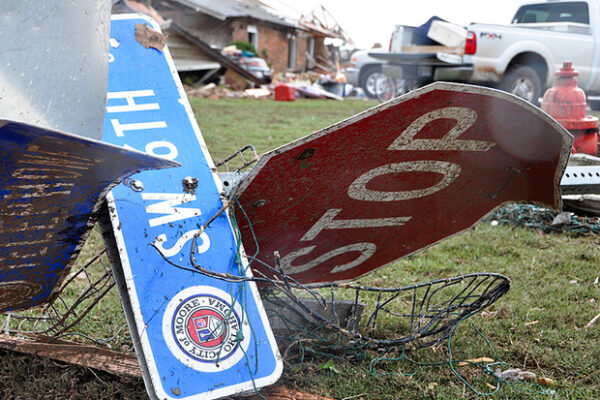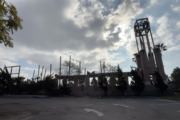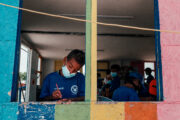(Photo: Dvids / Flickr)
Disasters do not occur in a secular vacuum. This means that the impact of a disaster on the lives of individuals—and on the communities in which they live—must be understood and responded to within the spiritual, social and cultural context in which the disaster occurs.
America is a nation of immigrants, and the most religiously diverse country in the world. It is multi-religious, multi-cultural and multi-linguistic. Since the Immigration Act of 1965, which eliminated the quotas linked to national origin, Buddhists, Hindus, Muslims, Sikhs and believers of virtually all the world’s religions have arrived here in increasing numbers, shaping the ever-evolving religious landscape of America. Members of the world’s religions live not just on the other side of the world but in our neighborhoods.
In times of crisis and disaster this diversity requires emergency management as well as mental and behavior health professionals to implement plans and protocols to ensure that the whole community receives services that reflect a working knowledge of the religious and cultural background and beliefs of those in need. This comprehensive perspective is as crucial for all responders as it is for survivors impacted by disaster.
Emergency managers and their mental health and behavioral health partners are increasingly involved in providing crisis response within multicultural, multi-religious, multi-linguistic communities, which highlights the importance of response plans that are religiously literate and competent. Thus, those who are committed to enhancing their religious literacy and competency skills are more likely to be effective caregivers to the whole community.
Recent disasters and public health emergencies such as Hurricanes Katrina, Rita and Ike; the 2009 H1N1 pandemic; the Joplin Tornado; wildfires in Western states; and the recent shooting at a Sikh Gurdwara (temple) have demonstrated the ability of communities to respond broadly to a disaster. These events vividly spotlighted the need for behavioral and mental health response plans that integrate a respect for, and understanding of, common standards of disaster spiritual care like those expressed in the National VOAD (Voluntary Organizations Active in Disaster) Disaster Spiritual Care Point of Consensus.
A recent survey of NCSP (Nationally Certified School Psychologist) practitioners found that there is limited awareness among school psychologists of how student diversity affects the provision of crisis intervention services. In actuality, culture and religion influence how a threat or disaster is perceived, how individuals interpret the meaning of crisis and how individuals and communities express reactions to disaster.
Step one in developing religiously competent mental health response training and preparedness is to define the terms of the conversation. What do we mean by religious competency and religious literacy? Religious literacy is a basic understanding of the history, sacred texts, beliefs, rituals and current manifestations of multiple faith traditions as well as an appreciation for the fact that religions intersect social, political and cultural in multiple ways. Religious competency is means knowing how to engage each faith community as a trusted, knowledgeable and effective partner.
One of the best strategies for acquiring both religious literacy and competency is for those who are charged with creating disaster response plans to work with all faith communities within their jurisdiction. Not surprisingly, the best sources of information about the cultural and religious needs of a community are the religious leaders that serve the jurisdiction’s congregations and other faith groups.
Faith communities have proven their willingness and ability to met the needs of their own congregations as well as those of the general public in times of crisis. Their knowledge of the communities they serve, and the trust placed in them by the American public, allows religious leaders to play a unique role in all phases of the disaster lifecycle.
With this in mind, the National Disaster Interfaiths Network (NDIN) and the University of Southern California Center for Religion and Civic Culture (USC CRCC) have formed a unique partnership to study strategies to help state and local government agencies, especially offices of emergency management and public health preparedness, to build ongoing relationships with faith communities in order to meet the needs of the whole community.
Together NDIN and CRCC have developed resources, training programs, an extensive library of best practices and other services designed to help emergency managers, public health preparedness managers, disaster mental health providers and other caregivers to develop religiously literate and competent disaster response plans and preparedness strategies. (Click the following links to find our Religious Literacy Primer and Religious Competency Field Guide.)
Beyond mere political correctness, developing this kind of capability ensures that all communities will have religiously competent disaster response plans and preparedness training, along with a process that builds the trust necessary to effectively meet the mental health needs of the whole community in times of disaster.
Peter B. Gudaitis, M.Div. is President of the National Disaster Interfaiths Network. He is the former Executive Director and CEO of New York Disaster Interfaith Services.
Peter Gudaitis is the president of the National Disaster Interfaiths Network (NDIN) and a guest contributor with the USC Center for Religion and Civic Culture.







